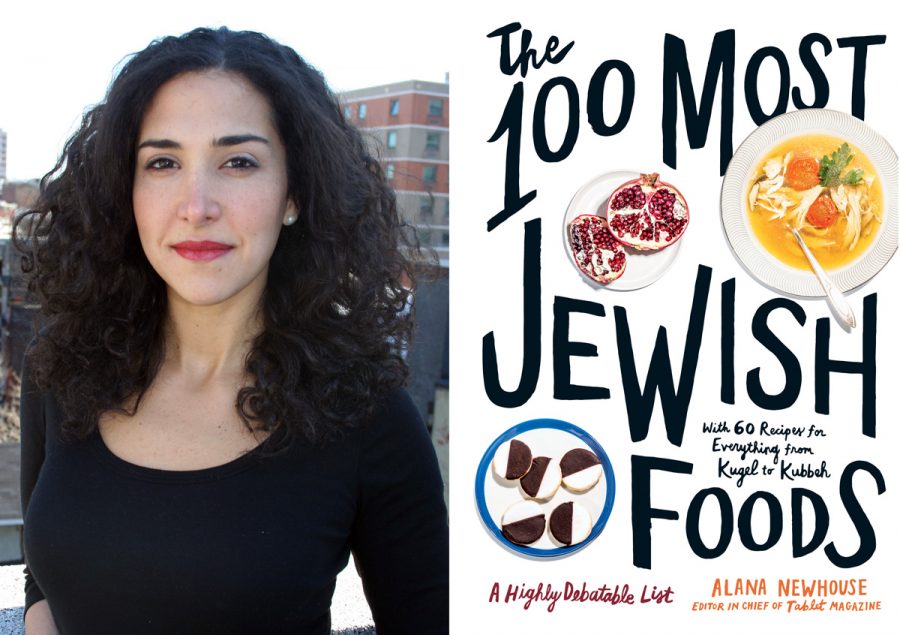A toast to Sweet’N Low and 99 other Jewish foods
Published November 7, 2019
My mother taught me that it was never OK to take something that didn’t belong to you. That was called stealing, and it was wrong. Looking back, the exception seemed to be Sweet’N Low.
I can’t remember a time growing up that mom didn’t stuff a few of these pink packets of sugar substitute into her purse when she had the opportunity. She’d procure them from no-frill diners as well as fancy restaurants, not even thinking twice. It was like a reflex. Regardless of how many hundreds of calories she might have consumed at any meal throughout the day, she insisted on Sweet’N Low instead of sugar in her evening tea.
And don’t even get me started on reused tea bags. Mom came from a long line of women who believed that like cats, a tea bag had nine lives. Mom (and my grandmother and assorted aunts) would use a tea bag, squeeze the excess moisture from it and then “rest” it on the lip of our kitchen sink so that it could be used again and again. It wasn’t until I was in college when a roommate shamed me into throwing my used teabag out that I finally broke family protocol.
I was reminded of these Futterman food foibles and more while reading “The 100 Most Jewish Foods: A Highly Debatable List,” edited by Alana Newhouse, editor-in-chief of Tablet, a Jewish online magazine. Newhouse will discuss the book, explaining how the list was made, who and why they contributed, and more when she appears at the Jewish Book Festival at 10:30 a.m. Sunday, Nov. 10. The $25 price includes a bagel breakfast, which begins at 9:30 a.m.
Believe it or not, both used tea bags and Sweet’N Low are two of the 100 most Jewish foods included in the book.
“First introduced in 1957 by a Jewish father-and-son team, over 500 billion packets have been produced to date,” writer Daphne Merkin explains in her essay about Sweet’N Low. “Think of them as a wink, a sly way of bypassing the confinement of caloric laws with no loss in taste — an eruv guarding against fatty expansion.”
In explaining the genesis of the book, Newhouse said it began as an interactive project in Tablet.
“We occasionally do these projects devoted to the canons of Jewish life, such as 100 great Jewish books and 100 great Jewish films,” she said. “A few years ago, it occurred to me that if you are going to try to encompass and articulate the Jewish inheritance, it would be a big mistake to leave out food.”
The book is equal parts history lesson, cookbook and commentary, all with a Jewish flair. It includes 60 recipes for everything from kugel to kubbeh, the latter of which are dumplings popular in Jerusalem but not Tel Aviv. In some cases, historical information is included to amplify the lore behind certain foods.
Take, for example, adafina, a stew made by Jews in the Iberian Peninsula during the Inquisition. Newhouse explains that it was important for entries like this one to be included because “conceptually, to me, adafina was a stew that Jews, who had converted to Christianity either willingly or under duress but wanted to keep their Jewish tradition, would make in secret.”
“The authorities would go around asking neighbors and servants if they saw anyone making this stew, which was their clue to people who still Judaized,” Newhouse said. “When I read about this, you realize that the notion that food is shallow or unimportant is deeply wrong. It’s simply not frippery. People risked their lives to express who they are via food.”
The book includes many of the usual suspects — bagels, chicken soup, kasha varniskes, stuffed cabbage and matzo balls — as well as some surprises such as carciofi alla giudia or “artichokes Jewish-style,” which is probably the most famous of Rome’s Jewish cuisine, and malida, a dish popular with India’s Bene Israel Jews. It’s a sweet porridge made from flattened rice flakes called poha, which gets flavored with jaggery and cardamom pods and decorated with fresh fruit, flowers, dried dates, almonds and shredded coconut.
Newhouse said she heard from people either questioning some of the entries or wondering why certain others were left out. Some asked why there was a catchall entry for deli rather than one for corned beef and pastrami and tongue, each of which is decidedly Jewish.
“Frankly, we could have done a whole book on 100 Jewish favorite deli foods,” said Newhouse, 43, adding that “the one I feel most regretful about is the whole universe of savory pastries, particularly in the Sephardic tradition, know as bourekas. That’s the term for a whole collection of pastries that emerged out of the Ottoman Empire and Middle East. From an intellectual standpoint, that should have made it in.”
Newhouse said that in reaching out to “food people, historians and cultural observers” for their opinions on what to include, many wrote back with broad conceptual suggestions.
“They cautioned us not to be too Ashkenazi-centric or too American,” she said. “Some also wrote with a specific idea, like you have to include X, Y, Z, and I want to be the one to write it.”
Hence, alongside several Tablet writers who contributed to the book, are sex therapist Dr. Ruth Westheimer, explaining why pomegranates, one of the foods mentioned in the Bible, are so sexy; fashion designer Zac Posen, fantasizing about dyeing fabric in vibrant, hot pink borscht; and “Everybody Loves Raymond” creator Phil Rosenthal, on the majesty and deliciousness of Entemann’s chocolate-covered doughnuts.
But perhaps the most controversial of this Top 100 list is the listing for treyf, which features a picture of bacon strips.
“Right off the bat, we started fighting about whether or not to include it,” Newhouse said. “Then Liel (Leibovitz, author of that entry) said there is no Jewish food without treyf. We can’t conceive of kosher food unless we acknowledge the existence of food that is not kosher.
“It’s like imagining Harry Potter without Voldemort. You can’t do it.”















